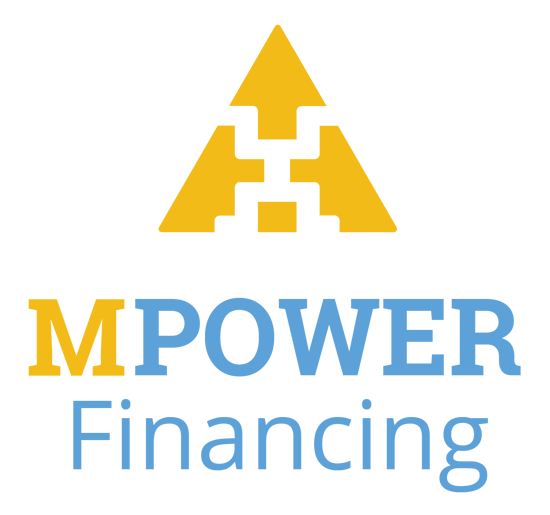What Is the Income-Based Repayment (IBR) Plan for Student Loans?
Federal student loan borrowers can stay on IBR, even as other income-driven plans go away in 2028. Before choosing IBR, compare it with the newest repayment plan called RAP.

Many, or all, of the products featured on this page are from our advertising partners who compensate us when you take certain actions on our website or click to take an action on their website. However, this does not influence our evaluations. Our opinions are our own. Here is a list of our partners and here's how we make money.
In the news. Changes to the Income-Based Repayment plan will start in 2026, as a result of President Donald Trump’s “one big, beautiful bill.” It’s the only existing income-driven plan that will remain after 2028.
The Income-Based Repayment (IBR) plan is currently one of four federal student loan repayment plans that base monthly bills on income, extend the repayment term beyond the standard 10 years and eventually forgive remaining student debt. Together, this group of plans is called “income-driven repayment.”
Under the “one big, beautiful bill” signed by President Trump in July 2025, IBR will be the only existing income-driven repayment plan available after 2028. The other three plans — SAVE, PAYE and ICR — will end. The bill also makes it easier for existing borrowers to qualify for IBR.
Generally, IBR is the best choice for current borrowers who want to stay on an income-driven repayment plan for the life of their loans. To qualify, you cannot borrow any new loans after July 1, 2026, and you must enroll in IBR before July 1, 2028. Miss the deadline, and you’ll be locked out of IBR permanently. Your only option then will be the new Repayment Assistance Plan (RAP), which could mean higher payments and a longer repayment term.
There are two versions of IBR: “old” IBR and “new” IBR. You can qualify for the “new” version of the plan — which has more generous terms — if you took out your first loan between 2014 and 2026.
Income-Based Repayment (IBR) plan overview: Old vs. New IBR
| IBR version | 'Old' IBR | 'New' IBR |
|---|---|---|
| Eligibility requirements | You took out your first loan before July 1, 2014. | You took out your first loan on or after July 1, 2014. |
| Repayment term until loan forgiveness | 25 years. | 20 years. |
| Amount of protected income (remainder is discretionary) | 150% of income above the federal poverty line for your location and family size. | 150% of income above the federal poverty line for your location and family size. |
| Payment amount | 15% of discretionary income. | 10% of discretionary income. |
| Other features | Capped monthly payments: you’ll never pay more than you would’ve on the standard 10-year repayment plan. | Capped monthly payments: you’ll never pay more than you would’ve on the standard 10-year repayment plan. |
Advertisement



Student loans from our partners

on SoFi® website
SoFi® 

Fixed APR
4.24-9.99%
Min. credit score
650
on Earnest website
Earnest 
Fixed APR
3.72-9.99%
Min. credit score
665

on Credible’s website
ELFI 

Best for faster repayment options
Fixed APR
4.88-8.44%
Min. credit score
680
Upcoming changes to the IBR plan
The IBR plan is impacted by the Trump Administration’s budget reconciliation bill, signed into law on July 4, 2025. Here are the key changes and dates to know:
| ‘One Big, Beautiful Bill’ IBR change | Implementation timeline |
|---|---|
| Removes the partial financial hardship requirement to qualify for IBR. | Effective immediately, but student loan servicers will spend up to two months implementing the change. |
| Existing borrowers can remain on IBR. | Must enroll in IBR no later than July 1, 2028. If you’re on a different income-driven plan at that time, you’ll be automatically moved to the new Repayment Assistance Plan (RAP), and there’s no going back to IBR. |
| New borrowers cannot access IBR. | July 1, 2026. If you take out a new federal student loan on or after that date, you’ll be permanently blocked from IBR. |
How is IBR not changing?
- Terms of the plan stay the same, depending on whether you took your loans out before or after July 1, 2014.
- Payments remain capped. That means that monthly IBR payments will never exceed what a borrower would have paid under the standard 10-year plan.
IBR vs. Repayment Assistance Plan (RAP)
If you take out all of your federal student loans prior to July 1, 2026, you’ll have two income-driven repayment plan options going forward: IBR and the new Repayment Assistance Plan (RAP).
You have to make a decision to stay on IBR before July 1, 2028. If you aren’t enrolled in IBR by that date, you can only access RAP going forward. You can switch from IBR to RAP in the future, but you cannot switch from RAP to IBR.
🤓 Nerdy Tip
If you take out any new loan on or after July 1, 2026 (the first day you can borrow for the 2026-27 school year), RAP will be your only income-driven option – even if you also have some older loans. Here’s an overview of the two plans:
| Plan name | IBR plan | RAP |
|---|---|---|
| Eligibility | Must take out all loans before July 1, 2026. | All borrowers, except those with parent PLUS loans, can enroll. |
| Repayment term until loan forgiveness | 20 or 25 years. | 30 years. |
| Amount of protected income (remainder is discretionary) | 150% of income above the federal poverty line for your location and family size. | None. |
| Payment amount | 10 or 15% of discretionary income. | 1-10% of your adjusted gross income, depending on your earnings bracket. |
| Family size deductions | Formula takes total family size into account. | $50 monthly discount per dependent child. |
| Interest accrual | Unpaid interest each month waived for first three years on subsidized loans; no interest waiver on other loan types. | Unpaid interest each month is waived, so balance can’t grow. |
Comparing IBR and RAP: Borrower examples
Illustrative examples can help you figure out which plan to choose. For the purposes of these examples, assume a borrower has $40,000 in federal student loans at a 5% interest rate and lives in the lower 48 states.
Single, no kids
| Household income | RAP payment | 'New IBR' payment | 'Old IBR payment' |
|---|---|---|---|
| $40,000 | $100 | $138 | $207 |
| $60,000 | $250 | $304 | $424 |
| $80,000 | $467 | $424 | $424 |
| $100,000 | $750 | $424 | $424 |
| $120,000 | $1,000 | $424 | $424 |
Single, one kid
| Household income | RAP payment | 'New IBR' payment | 'Old IBR payment' |
|---|---|---|---|
| $40,000 | $50 | $69 | $103 |
| $60,000 | $200 | $236 | $353 |
| $80,000 | $417 | $402 | $424 |
| $100,000 | $700 | $424 | $424 |
| $120,000 | $950 | $424 | $424 |
Borrowers with higher incomes tend to get lower monthly payments on the IBR plan when compared to RAP, especially if they qualify for the “new IBR.” That’s because IBR payments have a cap: you’ll never pay more than you would on the standard 10-year plan. On the other hand, people with a lower or middle income may see smaller payments on RAP. But, they may also spend five or 10 additional years paying off their debt until reaching the forgiveness threshold.
Ready to apply these examples to your own student loans?
- Use the Education Department’s loan simulator to get an estimate of your payments under the IBR plan for which you qualify. (It’s not yet updated to estimate RAP payments.)
- Then, to estimate your RAP payments, determine your “base payment percentage” and use the RAP formula.
The RAP formula is:
(RAP base payment / 12) - $50 per dependent = Estimated monthly RAP payment
Who is Income-Based Repayment best for?
Generally, IBR is the best plan for borrowers who want access to income-driven repayment after 2028, and who get lower payments on the plan than on RAP.
Income-driven repayment is typically a good fit for:
- Borrowers whose student debt balance is greater than their income.
- Borrowers who need lower monthly payments.
- Borrowers pursuing IDR loan forgiveness or Public Service Loan Forgiveness (PSLF).
Before deciding on IBR or RAP, do the math to see which plan will save you the most money. Remember, RAP could add an additional five or 10 years to your repayment timeline. That means you could pay significantly more in interest over time, even if you get lower monthly bills.
How to apply for Income-Based Repayment
To enroll in Income-Based Repayment, you can contact your federal student loan servicer or complete the process online:
Visit studentaid.gov/IDR. Log into your student loan account with your Federal Student Aid ID. Preview the IDR application to see which documents you’ll need ready, like your tax return.
Complete the application. Choose IBR as your desired repayment plan. Enter required details about your income and family. Remember to include your spouse’s information, if you file taxes jointly, as it will affect your payments under IBR.
How parent PLUS borrowers can get on IBR
Borrowers with parent PLUS loans are now eligible for the IBR plan, per a change in the law from Trump’s budget reconciliation bill. Previously, parent PLUS borrowers were only eligible for the ICR plan. But the ICR plan is going away.
Follow these steps to enroll in IBR with parent PLUS loans:
- Consolidate your parent PLUS loans before July 1, 2026.
- Immediately enroll in the Income-Contingent Repayment (ICR) plan.
- Make at least one full payment on the ICR plan.
- Enroll in the IBR plan before July 1, 2028.
If you don’t complete these steps by the deadlines, you’ll be permanently blocked from any income-driven repayment plan. Parent PLUS borrowers are not eligible for RAP. Instead, you would have to make payments under the standard plan, which doesn’t tie your student loan bills to your income.
Student loan forgiveness under IBR program temporarily suspended
Student loan forgiveness for borrowers on the IBR plan who finish their 20- or 25-year repayment term is suspended as of mid-August 2025, according to a recent update to an FAQ section on the Education Department’s Federal Student Aid office website.
This move is ostensibly because payments under the three other income-driven repayment plans (ICR, PAYE and SAVE) are paused due to a court order in the SAVE lawsuits. However, there is no court order blocking forgiveness under the IBR plan.
There's no clear guidance for borrowers who finish their 20- or 25-year IBR repayment term during this forgiveness suspension. You are required to make monthly payments until your forgiveness is processed, even after finishing your repayment term. Historically, servicers have sent refunds to borrowers who overpay past the forgiveness finish line.
Alternatively, you can try calling your servicer and ask them to place you in a forbearance until your IBR forgiveness is processed. This will pause payments, though interest may accrue on your debt.
Other ways to lower student loan payments
If income-driven repayment isn't right for you, the federal government offers extended repayment and graduated repayment plans, which lower your payments but aren’t based on your income. You may pay more interest under these plans, though, and neither offers loan forgiveness.
You also may be able to pay less by refinancing your student loans.
Refinancing federal student loans can be risky, as you’ll lose access to income-driven repayment and other federal loan programs and protections. But if you’re comfortable giving up those options and have strong credit as well as a steady income, refinancing may save you money.
Article sources
NerdWallet writers are subject matter authorities who use primary,
trustworthy sources to inform their work, including peer-reviewed
studies, government websites, academic research and interviews with
industry experts. All content is fact-checked for accuracy, timeliness
and relevance. You can learn more about NerdWallet's high
standards for journalism by reading our
editorial guidelines.
Related articles
AD
Refinance Your Student Loans with Earnest: smarter rates, total flexibility, no fees.
Check rate
on Earnest's website

AD

Refinance Your Student Loans with Earnest: smarter rates, total flexibility, no fees.
- Fixed APRs starting at 4.79%, Variable Rates starting at 5.88%;
- Customize your term down to the month (5–20 years);
- Skip one payment every 12 months.
Check rate
on Earnest's website
AD
Refinance Student Loans with SoFi:
low rates, flexible terms, no fees.
Check rate
on SoFi®'s website

AD

Refinance Student Loans with SoFi:
low rates, flexible terms, no fees.
- Rates: 4.74-9.99% (fixed) / 5.99-9.99% (variable) APR;
- Terms between 5–20 years, plus features like interest-only SmartStart for residents;
- Zero application/origination/prepayment fees — ever.

Check rate
on SoFi®'s website










